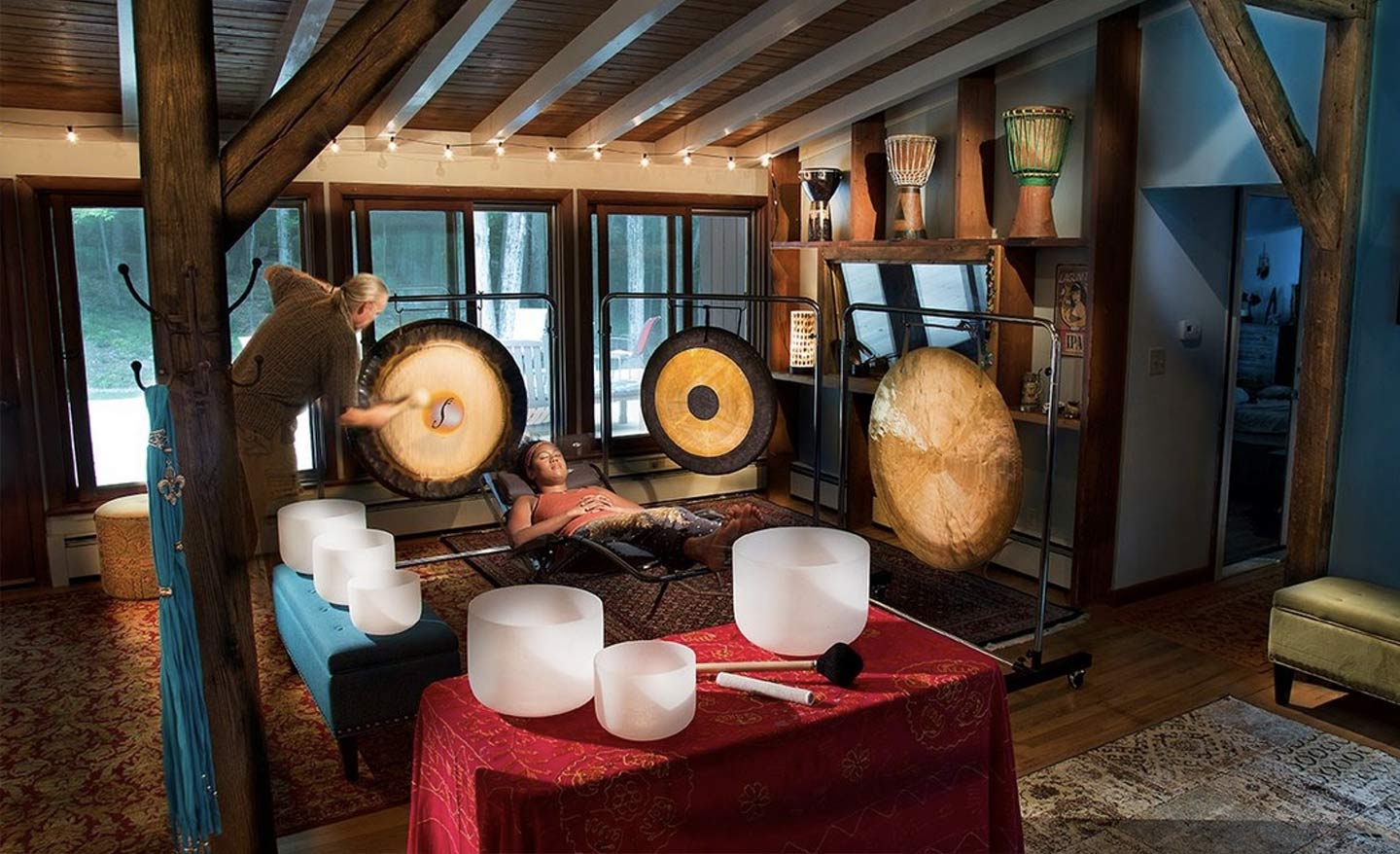Sound Healing
Adjunct instructor of psychology Rebecca Acabchuk takes her students to experience an increasingly popular form of meditation and therapy.
The students riding in Rebecca Acabchuk’s van were excited and a little nervous. As Acabchuk, an adjunct instructor of psychology, was driving her students to experience sound healing—an increasingly popular form of meditation and therapy that uses percussion instruments like crystal bowls, drums and gongs—they discussed current events and sang along to music streamed through their phones.
On the way back, they were silent.
“It was a deep and transformative experience for them,” said Acabchuk, who has a Ph.D. in neurobiology and physiology and is also a licensed Reiki master and yoga and meditation instructor. “I think they were taken aback by how calm they were without being tired. Having energy, but calm energy, was new for them.”
The trip to the Sound Retreat in Chester, Connecticut, was an immersive introduction to “Meditation and Mindfulness in Science and Practice,” a course offered through the Psychology Department that challenges students to explore meditation through science and hands-on practice.
People have been using sound, music and chants to heal the sick for thousands of years, Acabchuk says, but sound healing and other forms of meditation have only recently gained mainstream popularity as therapeutic treatment for anxiety, chronic pain, sleep disorders, PTSD, drug addiction and other conditions. And while the science behind the practice is still very new, a growing body of research shows meditation and yoga can lower stress, decrease inflammation and even alter the structure of the brain.
In the course, which is popular among psychology and neuroscience majors as well as athletes interested in improving their performance, students review and critically assess research findings on the physiological responses and neurological changes associated with meditation, while also practicing different forms of it each week.
“I encourage the students to be critical about any claims of ‘magical’ benefits of mind-body healing modalities and to approach such claims like a scientist by saying, ‘Show me the evidence,’” said Acabchuk.
In one landmark study, a Harvard Medical School neuroscientist found that people who had practiced meditation for an extensive period had more gray matter in the regions of the brain associated with attention and sensory processing, working memory, and executive decision making. A follow-up study found people with no previous experience with meditation showed changes in five different regions of the brain after just eight weeks of practice.
Still, scientists don’t understand exactly how mind-body therapies work, or how much of which kind is necessary for certain results. That’s why Acabchuk likes her students to experience the benefits firsthand. She scheduled the trip to the Sound Retreat early in the semester to help still-skeptical students better understand what can’t yet be entirely explained by science.
“Our entire class was put into a deep meditative state for approximately 45 minutes,” Noah Babbott-Bryan ’19 said of the sound healing session. “Personal experience of the benefits is undeniably powerful.”
